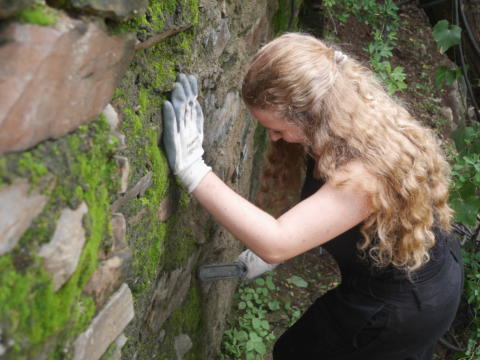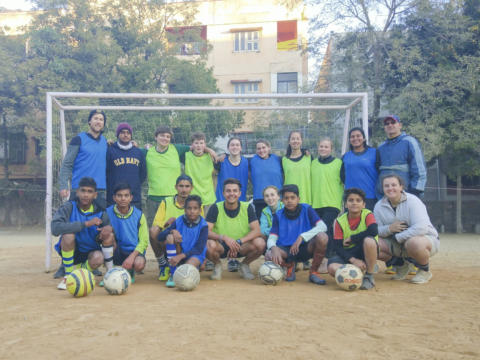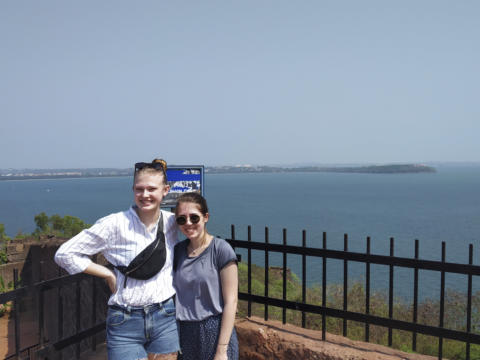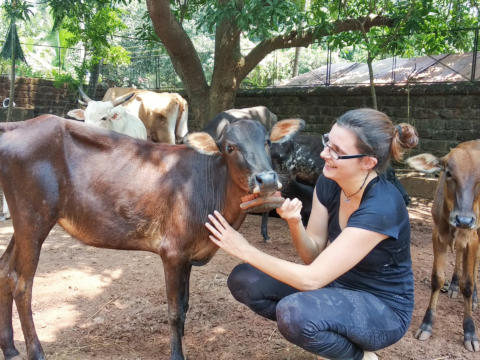Only 420€ per week!
Teaching Project
Sikkim - India
Visit Sikkim, and work with enthusiastic underprivileged children who will be happy to meet and learn from you!
You not only teach the course but it brings positive change which helps the children to be self-motivated and independent. You will teach at small local village schools or at a local kindergarten where you can foster good relationships with the children as you assist with extracurricular activities and inspire them to achieve their full potential and broaden their perspectives.
Program Description
Under our Sikkim Teaching Project there are two teaching options available to you to choose from.
Teaching
Helping children to deal with daily activities through education is what we do. Giving knowledge that is applicable practically in life. Providing awareness to children about the surroundings, environment, health and safety are the focus of our teaching. Educate basic conversational English and other subjects of your choice to children from different age groups (5 yrs to 16 yrs) with different capabilities. During the project, you will gain valuable experience and learn by observing the procedures of the in-house teachers. The project can take place either at a regular government, private or community schools for children or at the school in the rehabilitation center.
Participating teachers enable students to form relationships with someone from another background and culture, and the teachers can learn different teaching methods and techniques.
You will be taking different classes on an average of five classes a day (each class would be about 40 minutes). The schools usually have a very dull curriculum, so out-of the box activities and creative experiences such as sports or games are more than welcome and really appreciated by the children.
You will mainly assist the regular school teacher and so do not need to have any teaching background. You will teach and educate the children from different age groups and with different learning capacities. You are free to use different methods to teach but you can use the course book as a reference or educate children through conversational and spoken English. During your time there, you can teach them different subjects such as mathematics, history, science, geography, computer, technologies, music and other subjects, arts and crafts, different educational games, spoken and conversational English, personal development, environmental awareness, general health and safety and so on. All higher education in India is in English, so it is vitally important that children must learn English to continue further higher education.
Child development activities could include a quiz contest, sports, awareness campaigns etc.
- To help the kids grow in their confidence and learn better English which will help them in many ways.
- To improve the standard of English language acquisition, supervising and interacting with the students and providing them with a higher level of self-confidence that they lack.
- The purpose of this project is to initiate new ideas that can help in their existing activities, lifestyle, health, and behavior. Working with children to help them improve their abilities based on the plan scheduled for them and also fun activities.
- You also could get an opportunity to participate in role plays in educating the community on topics such as the importance of education, health and hygiene, women’s rights, awareness on the provision/schemes provided by the state government. To create a stimulating and fun environment for learning.
Classes are from Nursery to Grade 10, it is categorized into four different levels as Pre-primary (kindergarten), Primary (1-5), Lower secondary (6-8) and Secondary (9 to 10).
Average numbers in a class are about 25 students.
Kindergarten Teaching
You will work as an assistant teacher at one of our many local kindergarten schools. This program helps children in the villages improve their English language. You will primarily teach children English, Mathematics, Arts and Crafts, games and educate them. You may be called upon to help teach drama, music and foreign languages. You will assist other teachers and staff and may have to create teaching plans, etc. All the teaching institutions are more than 5 years old. They all share the common values and aim to create a better future for the children. Some of them provide free education to the children. All the organizations are well managed and are supervised by officers from government and private organizations.
- Primarily teach English (spoken and written), but also teach drama, music, arts, crafts and foreign languages
- Encourage children in academics and promote all round development of the child
- Assist teachers and other staff
- Create teaching plans
- Mind building and physical strengthening games
Aims & Objectives
The aim of the program is to bring international students in contact with local children such that the children and the participant can learn together and interact through education and learning.
Schedule
Monday to Friday
Teaching
School time is from 10:00 to 16:00
The duration of each subject is 40 minutes.
Lunch break is normally from 12:30 to 13:30
Kindergarten Teaching
9:30 to 12:00 – Start your day at the kindergarten school
12:00 to 13:30 – Lunch
13:30 to 15:30 – Continue at the kindergarten
***This schedule can be changed and/or amended depending on weather conditions, local conditions and unforeseen circumstances.***
***Mid June to 1st week of July, December & January are winter vacations in Sikkim, thus this project will not function during this part of the year.***
Note: This schedule can be changed and/or amended depending on weather conditions, local conditions and unforeseen circumstances.
Note: Mid June to 1st week of July, December & January are winter vacations in Sikkim, thus this project will not function during this part of the year.
Participant Criteria & Requirements
Standard Requirements
Minimum age: 18
Maximum age: –
Minimum English level: Basic
CRB required: On Signup
Passport copy required: On Signup
Resume copy required: No
Required qualification: None
Additional Requirements
- Participants above the age of 65 should have medical clearance.
Additional Equipment
It's a good idea to bring posters, pictures, music CDs, storybooks, flash cards and so on to brighten up lessons.
Dress Code
- Cover up as much as possible in the spirit of the local culture to avoid embarrassment.
- Your clothes must not be too short, too tight or too revealing. Kindly make sure your shoulders and legs are covered.
- Dress professionally since you will be working in a professional environment while teaching the children.
- It is completely fine to wear western clothes as long as they fit the local standards
- Be thoughtful of the graphics, symbols or text printed on your clothing and avoid wearing clothing styles that might be inappropriate
- Be thoughtful to poor communities by not displaying expensive items and clothes
- Wearing local clothes could help you build a good working relationship with the community
Location
An area of unspoilt natural beauty, framed by snow-capped Himalayan peaks. The capital of Sikkim, Gangtok, reflects this tiny state’s extraordinary ethnic diversity. In the crowded city which spills precariously down a ridge, Lepchas (the region’s original inhabitants) live alongside Tibetans, Bhutias, Nepalis and Indians from the plains. Though now full of modern structures, Gangtok’s “Shangrila” aspects can still be experienced in pockets of the city and in its alpine environs.
Until 1975, Sikkim was a kingdom with the status of an Indian Protectorate. It was ruled by the Chogyals Buddhists of Tibetan origin, whose dynasty began in the 17th century. However, the British Raj’s policies of importing cheap labour from neighbouring Nepal for Sikkim’s rice, cardamom and tea plantations drastically changed Sikkim’s demography, soon Nepali Hindus constituted 75 per cent of the state’s population. In 1975, the population of Sikkim voted overwhelmingly to join the Indian Republic, ending the rule of Palden Thondup, the last Chogyal.
About the Accommodation
In our center, there is a mini library, a dining room, a lounge area where you can hang out with fellow participants and a beautiful garden to relax.
Furthermore, there is a refrigerator which you are welcome to use to store food and beverages.
Food Arrangements
The meals are a mix of Western and Indian food, consisting mainly of vegetarian dishes including rice and vegetables. You can expect to have a chicken dish about twice per week. You can also use the kitchen facilities to cook for yourself or eat out at any of the local restaurants.
Facilities
ATMs: There are ATM's around our centers. The closest one to our residence is about a 15 minute walk from the house.
Shop: The closest local supermarket is a 15 minute walk from the centre.
Activities & Events
No scheduled activities outside the program.
Sights & Surroundings
Enchey Monastery, whose large prayer hall is full of vibrant murals and images, representing the entire pantheon of Mahayana Buddhist deities. Enchey’s festivals feature spectacular masked dances. At the southern end of the town is the Namgyal Institute of Tibetology. Established in 1958, it has a rare collection of medieval Buddhist scriptures, bronzes and embroidered thangkas.
Saramsa Orchidarium, situated 14 km south of Gangtok, displays many of the 450 orchid species found in Sikkim. They flower from April to May, and again in October.
Rumtek Monastery, 24 km southwest of Gangtok, is the headquarters of the Kagyupa (Black Hat) sect, on of the oldest Tibetan Buddhist sets, and the seat of its head, the Gyalwa Karmapa. The 16th Karmapa fled Tibet in 1959 after the Chinese invasion and built a replica here of this monastery at Tsurphu in Tibet. Rumtek is an impressive complex, its flat-roofed buildings topped with golden finials, and filled with treasures brought from the monastery in Tibet. Especially splendid is the reliquary chorten of the 16th Karmapa, behind the main prayer hall, made of silver and gold and studded with enormous corals, amber and turquoise.
Tsomgo Lake, 40 Km northeast of Gangtok, lies at an altitude of 3780 m. Visitors to the lake require a special permit from the Sikkim Tourism office in Gangtok. The drive to Tsomgo Lake, close to the border with China, is spectacular, and the lake is an impressive sight both in spring and summer when it is surrounded by alpine flowers in bloom, and in winter when it’s frozen solid. Visitors can go for rides and the splendid shaggy black yaks that stand docile on the lake’s shores.
Transportation
From this location we do not provide free transport to other locations.
Quick Facts
Name: Republic of India (Bhārat Gaṇarājya)
Population: 1.252 billion
Capital: New Delhi
Language: Hindi, English and 22 other officially recognized languages
Currency: Indian Rupee (INR)
Time zone: UTC +5:30
Country Information
India is known for its pyramid-like temples, its colorful streets and it’s crowded cities. This country represents one of the most vivid and the largest cultures in the world. From the golden triangle of Delhi, Jaipur and Agra to the coast where Ayurveda medicine was born, India offers a 360 degree journey through the most magical of lands. Known for being the second most populated country in the world, India will show you the faces of thousands of Hindu gods in its very vast collection of temples all throughout the country. The land of colors and smiles is ready to take you on your next adventure whether road tripping or helping out in local communities, this sub-continent will amaze your senses. India will shift the way you see the world.
India’s literacy rate is around 60% for women and 80% for men. The principal language is Hindi and English is also commonly used in all major cities. New Delhi, the capital of India, is what many would call the real deal when travelling through the country. It is one of the biggest and most populated cities in the whole world with up to 25 million citizens. New Delhi is known for its amazing cuisine and its new modality of “street food”, which means restaurants with every specialty you can imagine are available to you all throughout the city! Chennai is another of the biggest cities in India, known as the “Detroit of India” for its automobile industry. If you are looking for a quieter spot Kerala is the centre of lifestyle, art, architecture, language and literature in all of the country!
Climate
India is so vast that climatic conditions in the far north have little relation to those of the extreme south. While the heat is building up to breaking point on the plains, the people of Ladakh, in the Himalaya, will still be waiting for the snow to melt on the high passes.
India has a three-season year – the hot, the wet and the cool. Generally, the best time to visit is during winter (November to February) although there are regional variations.
Summer (hot): The heat starts to build up on the northern plains of India from around February, and by April or May it really heats up. In central India temperatures of 45 °C and above are commonplace. Later in May, the first signs of the monsoon are visible in some areas – high humidity, violent electrical storms, short rain-storms and dust storms that turn day into night. The hot season is the time to leave the plains and retreat to the hills, and this is when Himalayan hill stations are at their best (and busiest). By early June, the snow on the passes into Ladakh melts and the roads reopen.
Monsoon (wet): When the monsoon finally arrives, it does not just suddenly appear. After some advance warning, the rain comes in steadily, generally starting around 1 June in the extreme south and sweeping north to cover the whole country by early July. The monsoon doesn’t really cool things down: at first hot dry and dusty weather is simply replaced by hot, humid, muddy conditions. Even so, it’s a welcome relief, not least for farmers who face their busiest time of year as they prepare fields for planting. It doesn’t rain solidly all day during the monsoon, but certainly rains virtually every day and the water tends to come down in buckets for a while followed by the sun. The main monsoon comes from the southwest, but the southeast coast is affected by the short and surprisingly wet northeast monsoon, which brings rain from mid-October to the end of December.
Winter (cool): Finally, around October, the monsoon ends for most of the country, and this is when most tourists visit. Generally, it’s not too hot and not too cool (although in October it can still be surprisingly humid in some regions). Delhi and other northern cities become quite cold at night in December and January. It certainly becomes cold in the far north. In the far south, where it never gets truly cool, the temperatures become comfortably warm.
Culture
Hinduism is a big part of the story and construction of Indian culture. India is known for its distinctive arts such as architecture, literature and performing arts but in the modern era it has shifted towards the film industry. Bollywood is followed by the Middle East, South Asia and even Russia! Their movies are known for its musical intake and beautiful stories and characters, all, native Indian. One of the things that characterize India the most is its caste system; this model includes the old tradition of arranged marriages and very traditional family values throughout castes and the country. Don’t miss a cricket match when you visit! It is the nation’s favourite sport and a beloved pastime in the country.
Hinduism, Islam, Christianity, Sikhism, Buddhism, Jainism and Zoroastrianism are the major religious communities in the country. According to the 1990 census, Hindus constitute about 83% of the population followed by Muslims with 11% and Christians with 2%. Sikhs constitute about 1.6 %. Buddhists 0.6% Jains 0.3% and Zoroastrians (Parsees) 0.085%, of the 1 billion population. The rest constitute other minor religions. The population of all the 6 major religions has increased but Jainism has increased only marginally. India is a land of bewildering diversity. It is a jigsaw puzzle of people of every faith and religion, living together creating a unique and colorful mosaic. There is a festival for every reason and season. Many festivals celebrate the various harvests, signifying great historical figures and events while much express devotion to the deities of different religions. Every celebration revolves around rituals of prayer, seeking blessings, exchanging goodwill, and decorating houses, wearing new clothes, music, dance and feasts.
Transportation
The Indian railways are one of the largest undertakings in the world. The network covers a distance of over 60,000 Km. Road covers 5.5 million kilometers and over 10,000 km of inland navigable waterways. Using rail and bus services, one can reach almost any point on the Indian map though not always on time. All large cities are also connected with domestic air services.
Buses operate frequently to all smaller towns to/from major cities. There are also inter-state buses that take you from one city to the other (non stop). Before booking your bus tickets, always check the time it would take from one point to the other. For the local buses, you buy the ticket once you get on. For the lines that go between cities you will have to book and pay in advance.





